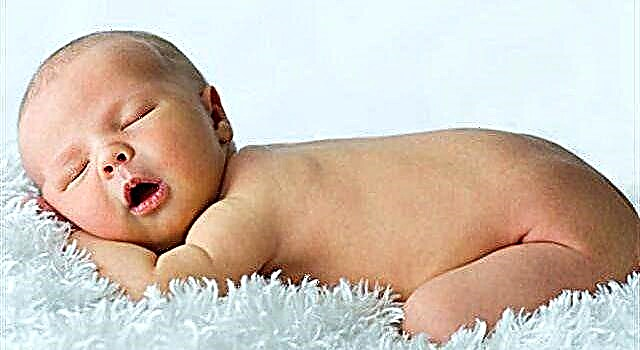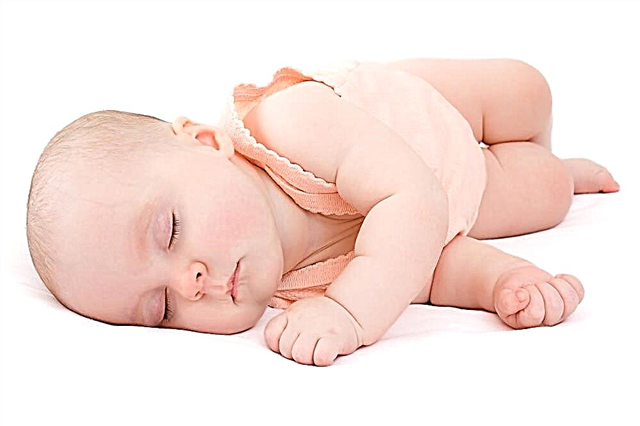
If heart diseases in newborns and infants, as well as in older children, are detected on time, this allows them to be successfully treated and, in many cases, to save the child without allowing complications and irreversible changes.

However, sometimes alarming symptoms go unnoticed. Because of this, the crumbs may develop heart failure. And therefore, all parents should know how to determine such a problem in a baby, so that timely therapy will eliminate this condition, which is dangerous for the child's life.
What is it
Heart failure (abbreviated - HF) is a condition in which, due to the reduced contractility of the heart muscle, blood circulation inside and outside the heart is disrupted. With such a pathology, the myocardium is unable to provide the required release of blood, because of which the entire body of the child suffers.
Chronic insufficiency is more common, which develops due to various pathologies of blood vessels and the heart. The main danger of this condition is the presence of a latent stage of the course, therefore, without timely early diagnosis, the pathology turns into a difficult and life-threatening child.

Causes
In newborns, HF is often triggered by congenital heart defects, especially if they are severe or combined. In infants, the development of HF is possible both due to congenital malformations and due to congenital myocarditis. If the infant develops infective endocarditis, valve damage can also lead to heart failure.
In children over 7 years of age, the cause of HF is often rheumatism, the manifestation of which is acquired valvular defects and damage to the heart muscle.
At any age of a child, HF can cause:
- Cardiomyopathy.
- Chronic tachyarrhythmias.
- Kidney disease in which oliguria or anuria begins.
- Serious lung disease, such as chronic pneumonia or fibrosing alveolitis.
- Injuries.
- Organ overload due to excessive fluid therapy.
- Severe anemia.
- Heart surgery.

Symptoms
In childhood, heart failure manifests itself:
- Shortness of breath.
- Weakness.
- Increased fatigue.
- Sweating.
- Tachycardia.
- Blueness of the skin.
- Cough.
- Enlarged liver.
- Swelling of the veins in the neck.
- Swelling.
A more detailed answer to the question of what is heart failure and how to treat it can be heard in the next video.
Classification
As already noted, HF in children is divided into:
- Chronic, which occurs most often.
- Acute, which is mainly a complication of chronic. The main features of this condition are the rapid development and severity of the child's condition.
Taking into account the changes in the child's body, one can distinguish:
- Diastolic heart failure, when the cavities are poorly filled in diastole.
- Systolic HF, when cardiac output decreases due to the inability of the myocardium to contract normally or with its volume overload.
In addition, such a pathology happens:
- Left ventricular. Due to the fact that this pathology mainly affects the pulmonary circulation, this heart failure is also called cardiopulmonary. It manifests itself as shortness of breath, cyanosis and cough, and in severe cases, pulmonary edema develops.
- Right ventricular. With this type of heart failure, the right heart and the systemic circulation are affected, therefore its other name is cardiovascular failure. With this pathology, the liver and spleen increase, and edema also appears.
Depending on the severity of the condition, the following stages of HF are distinguished:
- I - symptoms are absent in a calm state and appear only with exertion.
- II A - clinical manifestations are present at rest and are manifested by an increase in heart rate by 25-30%, an increase in RR by 30-50%, and with right ventricular heart failure - by the protrusion of the liver from under the ribs by 2-3 cm.
- II B - Symptoms are manifested by an increase in heart rate by 30-50%, an increase in RR by 50-70%, the appearance of cyanosis, cough, moist wheezing in the lungs, and with right ventricular heart failure - not only protrusion of the liver, but also swelling of the veins in the neck.
- III - with left ventricular heart failure, this stage is characterized by a significant increase in RR and heart rate, as well as the development of pulmonary edema, and with right ventricular heart failure - an increase in the liver and edema syndrome.

Diagnostics
Having noticed signs of heart failure in a child, it is important to immediately contact a pediatrician, who will refer the baby to a cardiologist and for such examinations:
- Auscultation.
- Echocardiography with Doppler.
- ECG.
- Fluoroscopy.
Treatment
Acute heart failure requires an immediate response from parents and doctors. The child needs urgent help, which will eliminate hypoxia, relieve blood vessels, improve the contractility of the organ, and eliminate electrolyte disorders. For this, the child is given oxygen, diuretics, drugs for vasodilation, vitamins, antispasmodics, glycosides and other medicines. At the same time, only a doctor should prescribe any medications to a child with a diseased organ.
In chronic heart failure, therapy will focus on:
- Elimination of tachycardia, shortness of breath and fluid retention.
- Protection of the myocardium, brain, blood vessels and kidneys.
- Improving the child's quality of life and prognosis.

In difficult cases, surgery is performed, which can be the use of a cardioprosthesis, cardiomyoplasty, or heart transplant. Of great importance in the treatment and recovery of children with HF is also a daily regimen, a balanced diet, and dosed physical activity.
For heart failure in children, see the program "On the most important thing."



